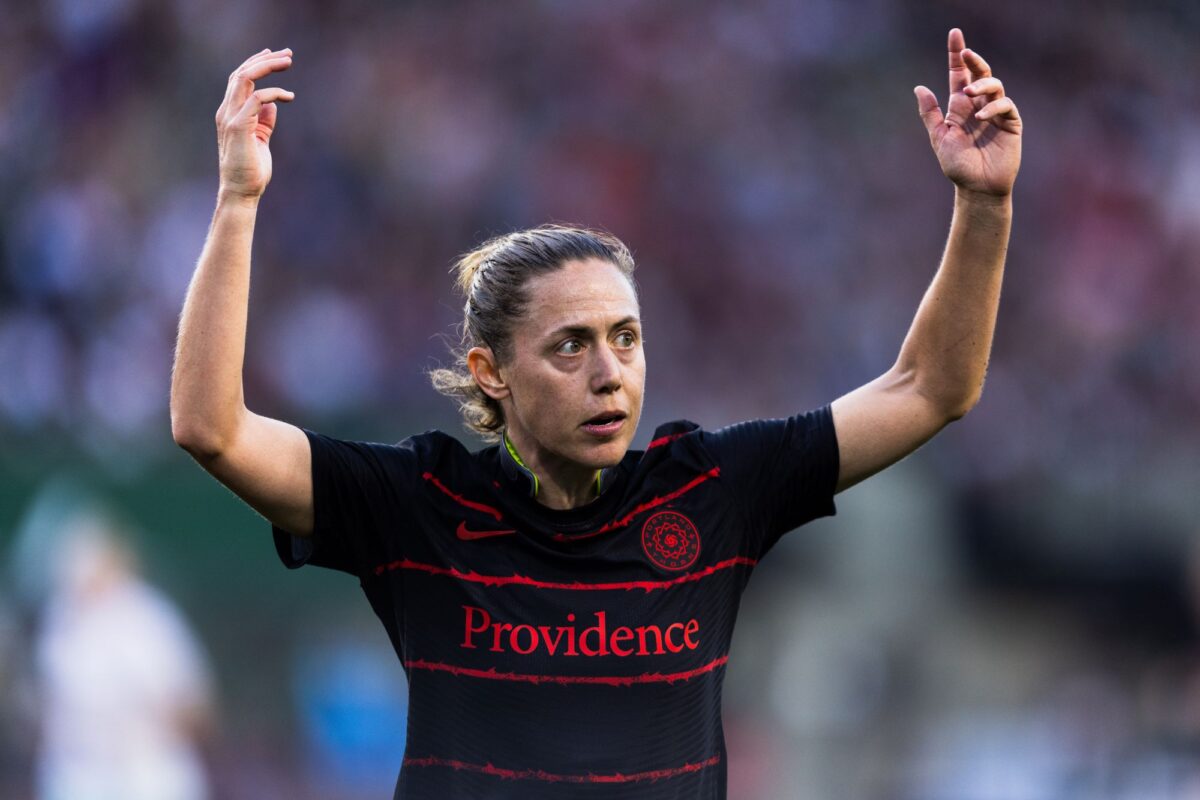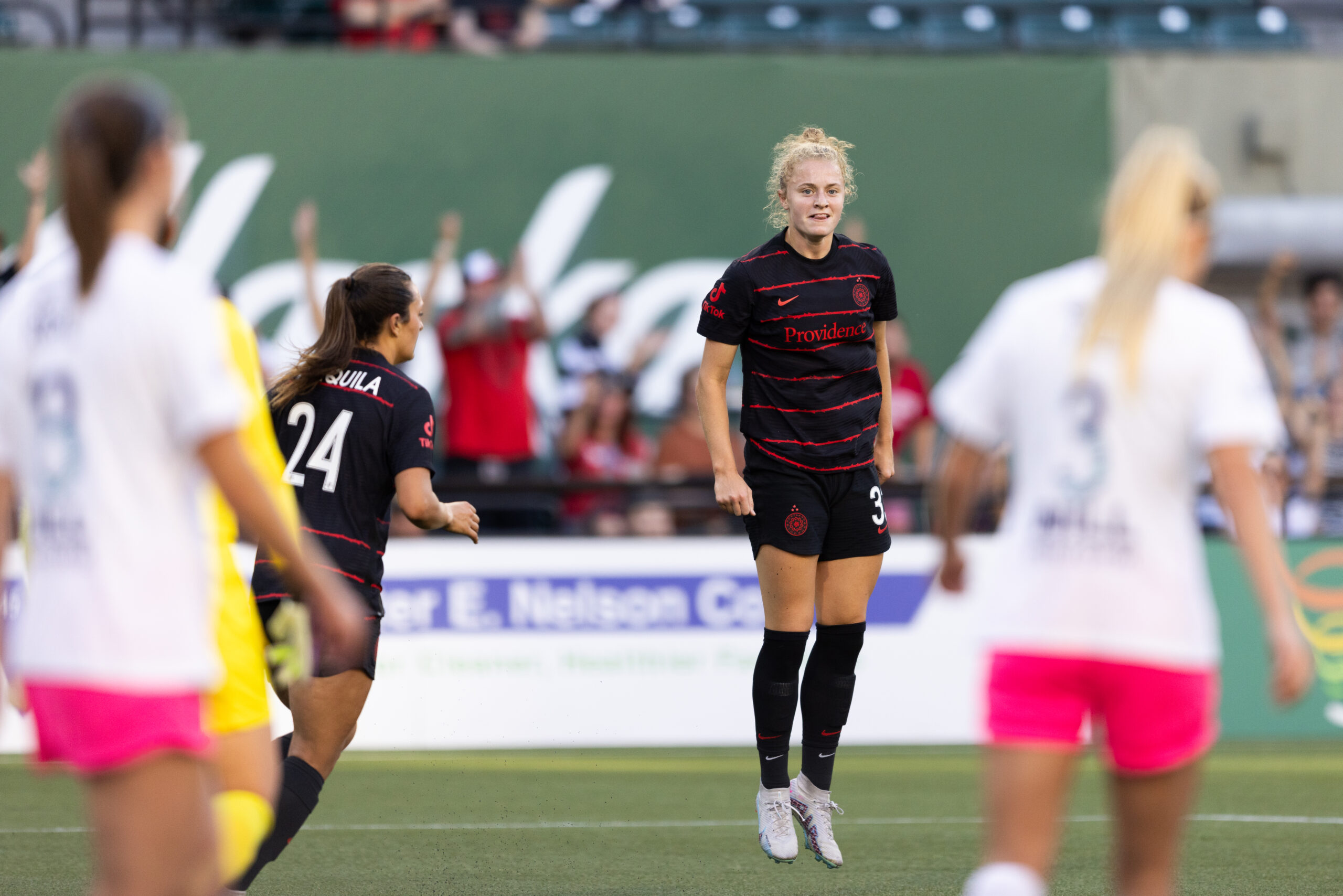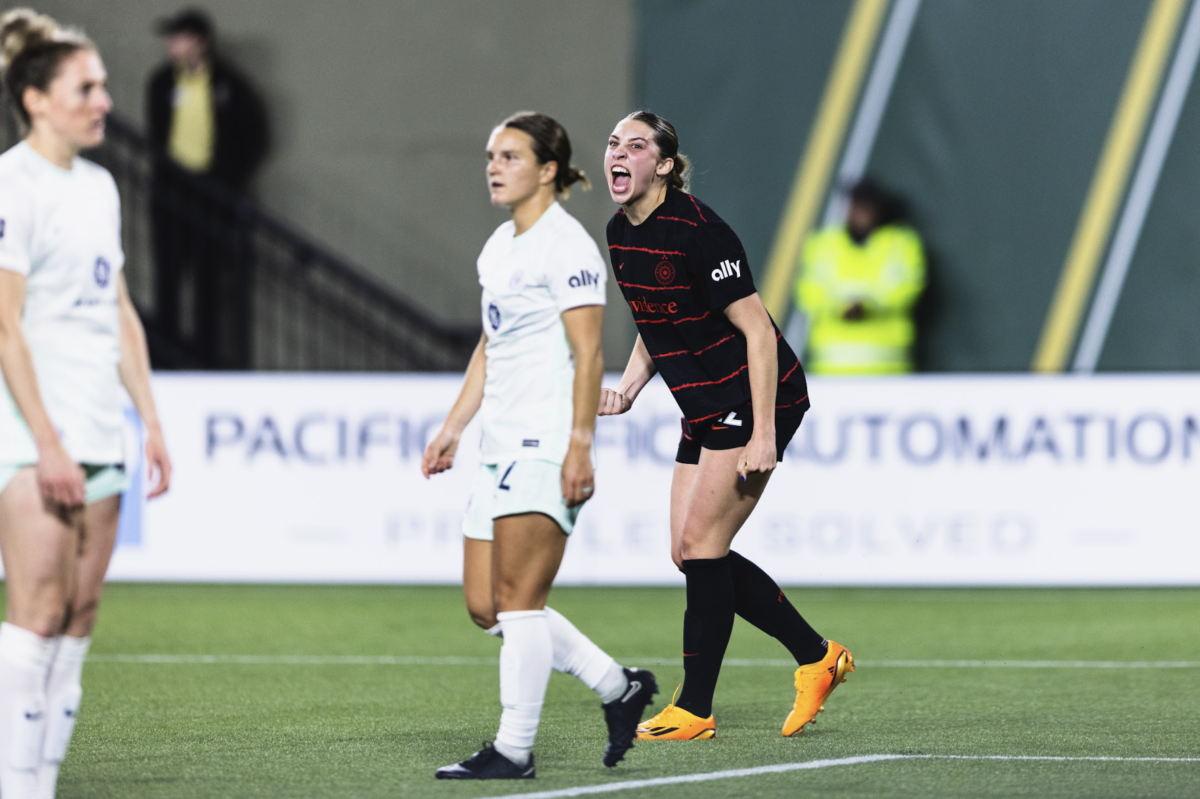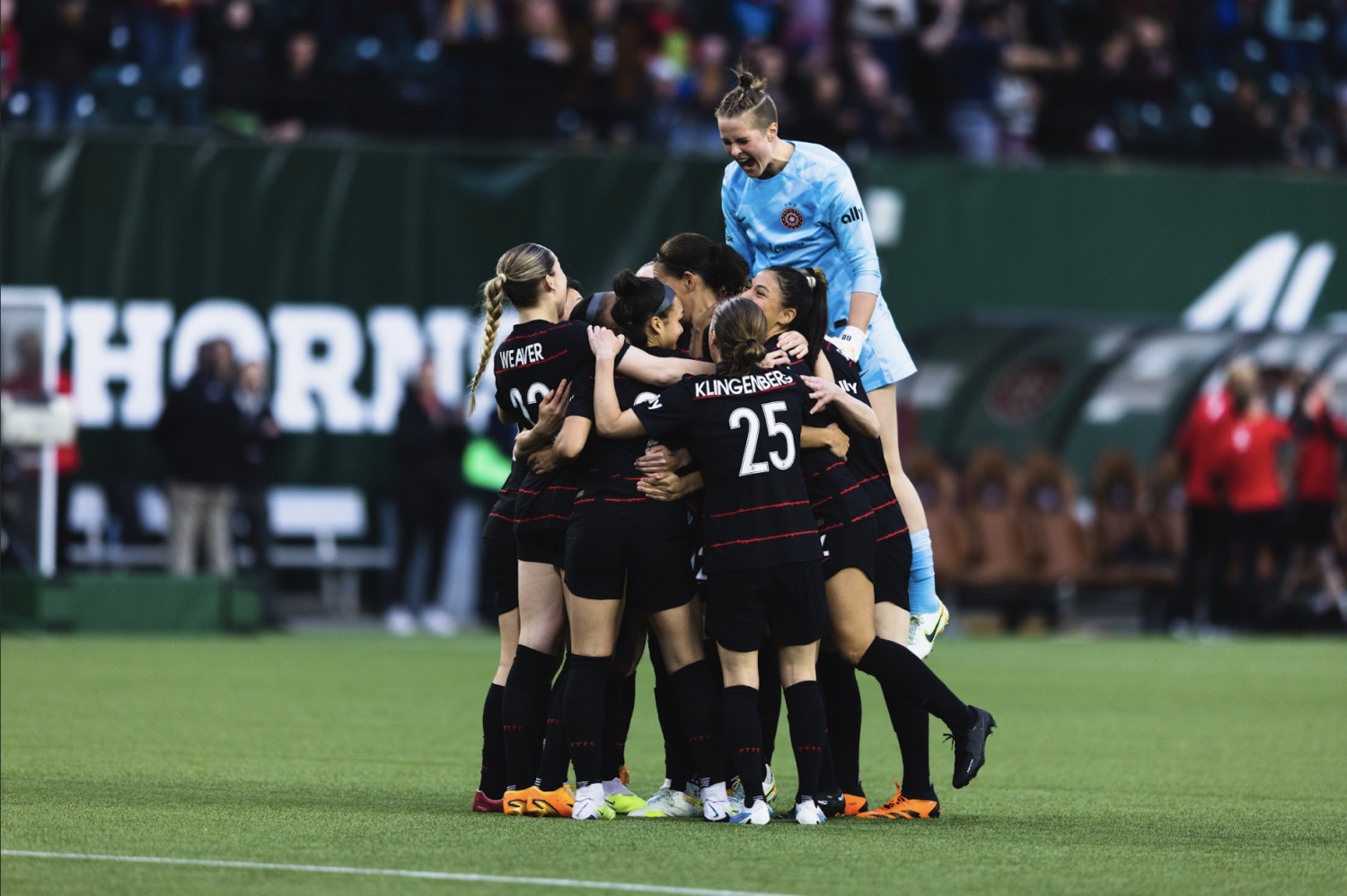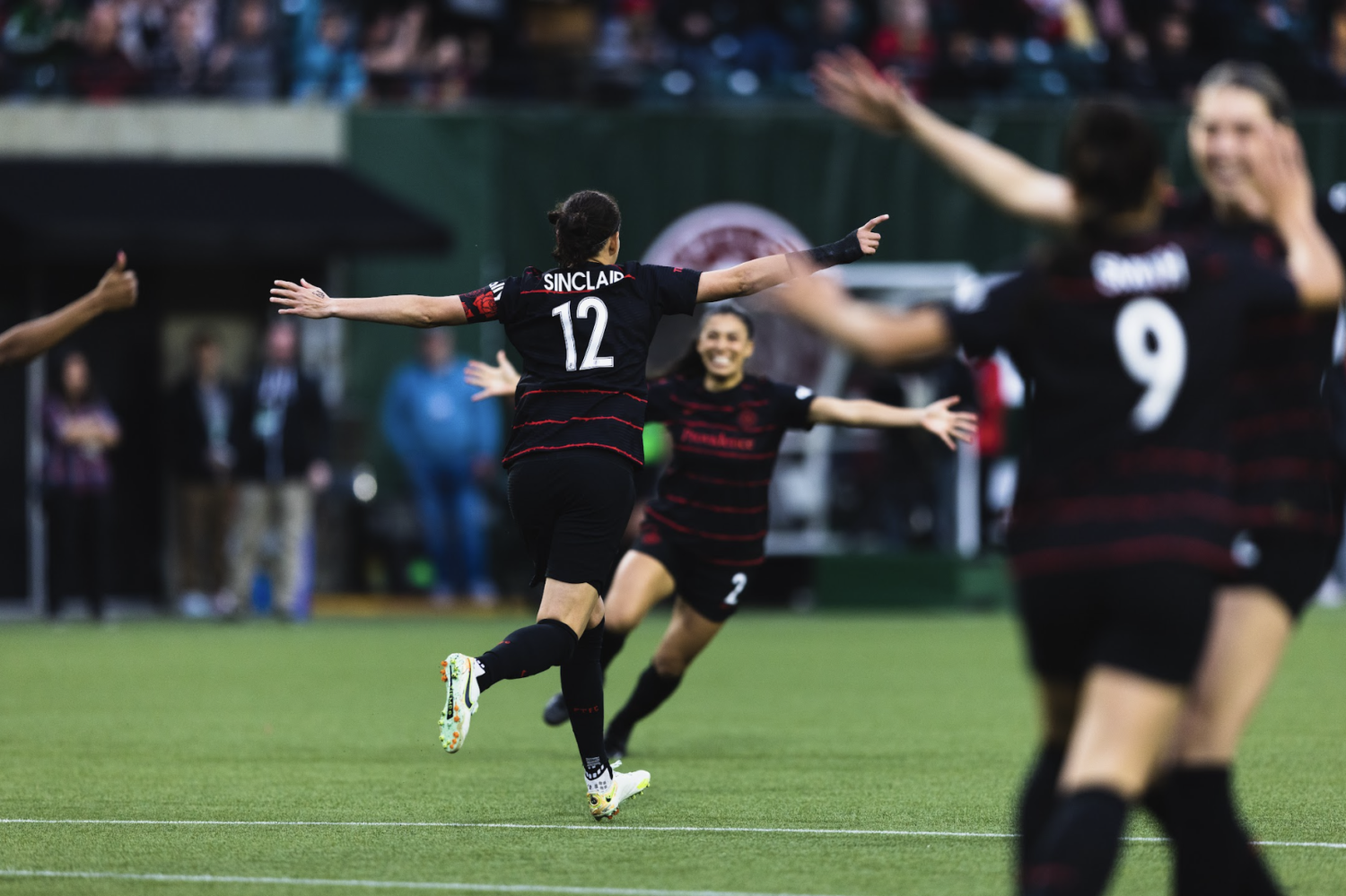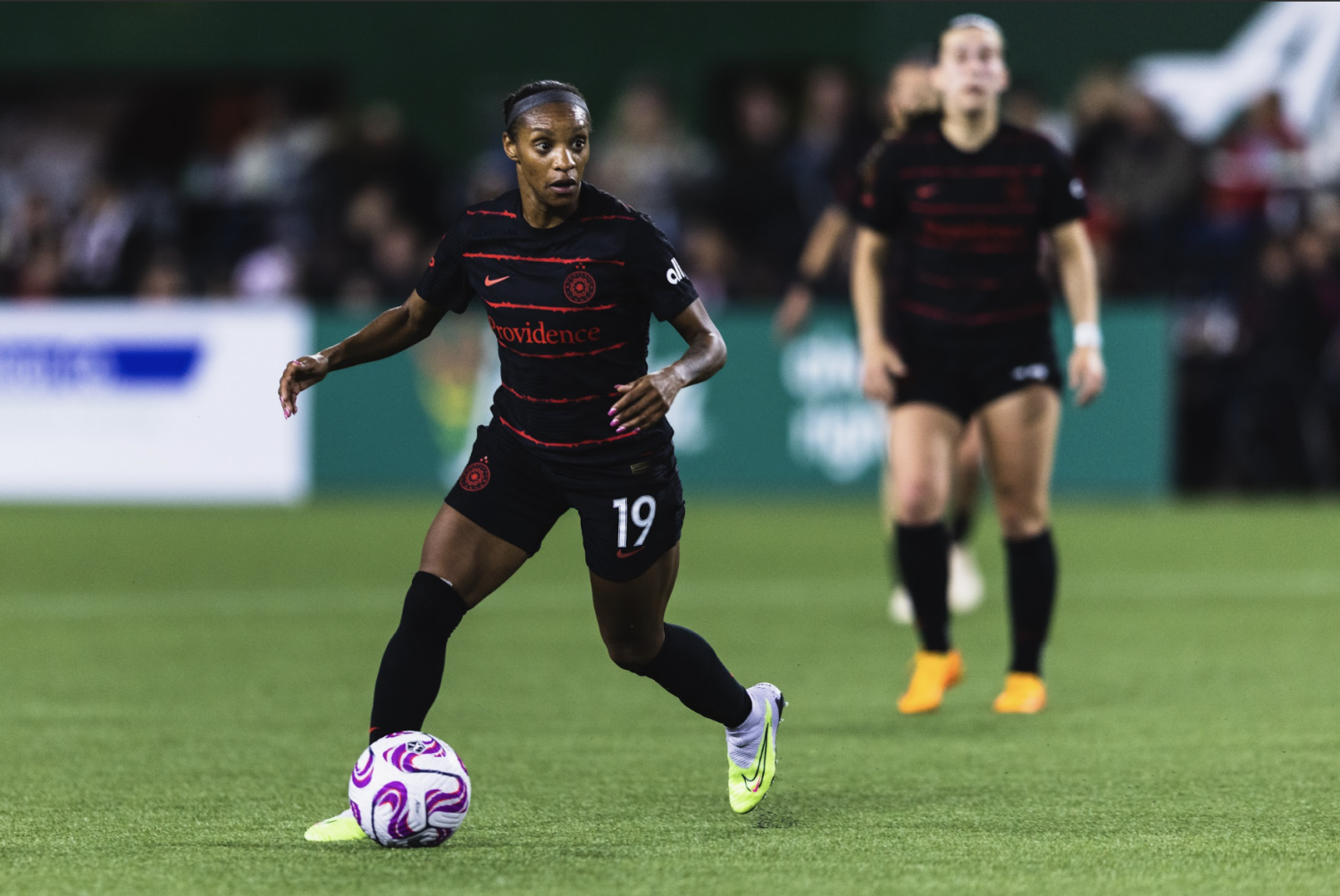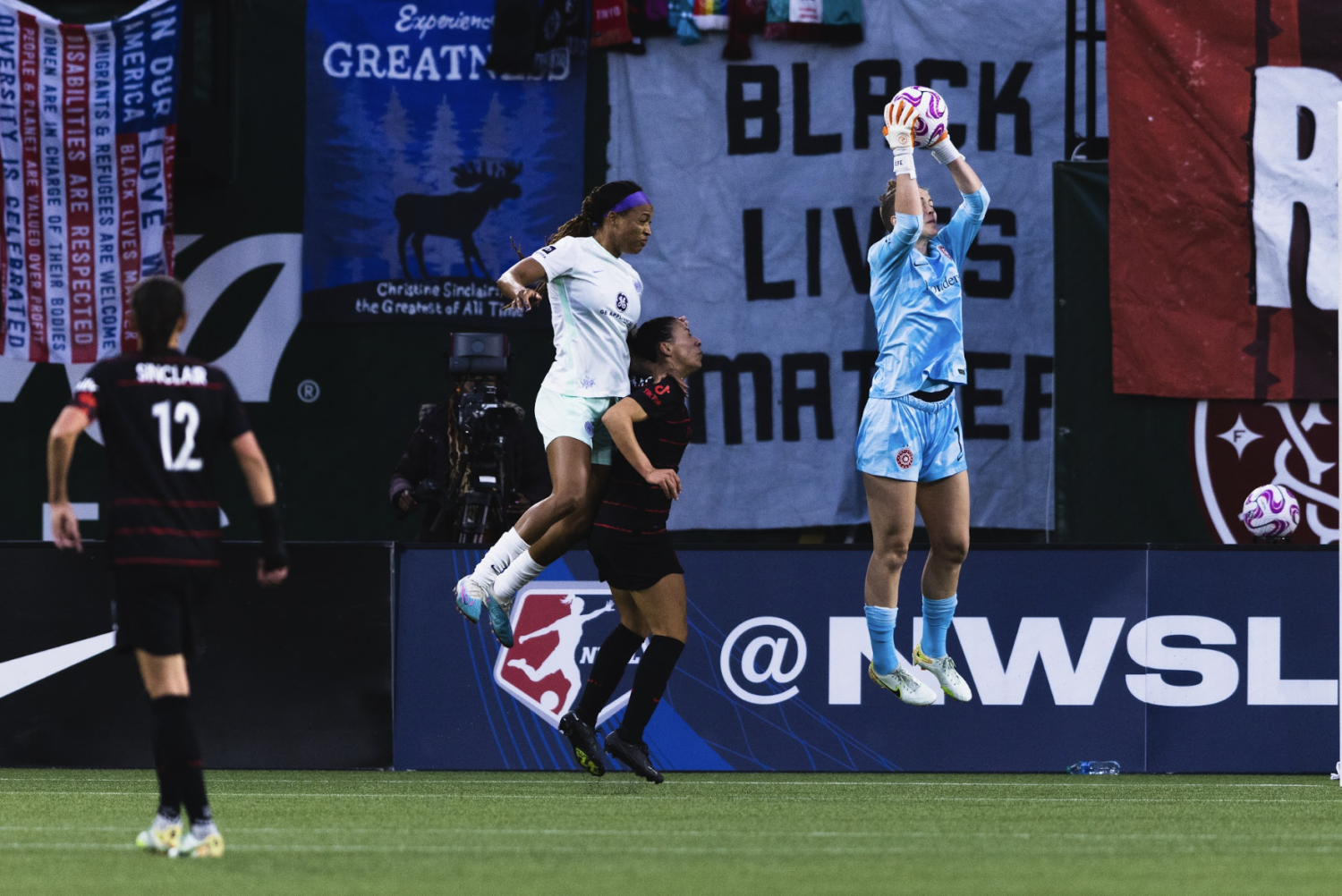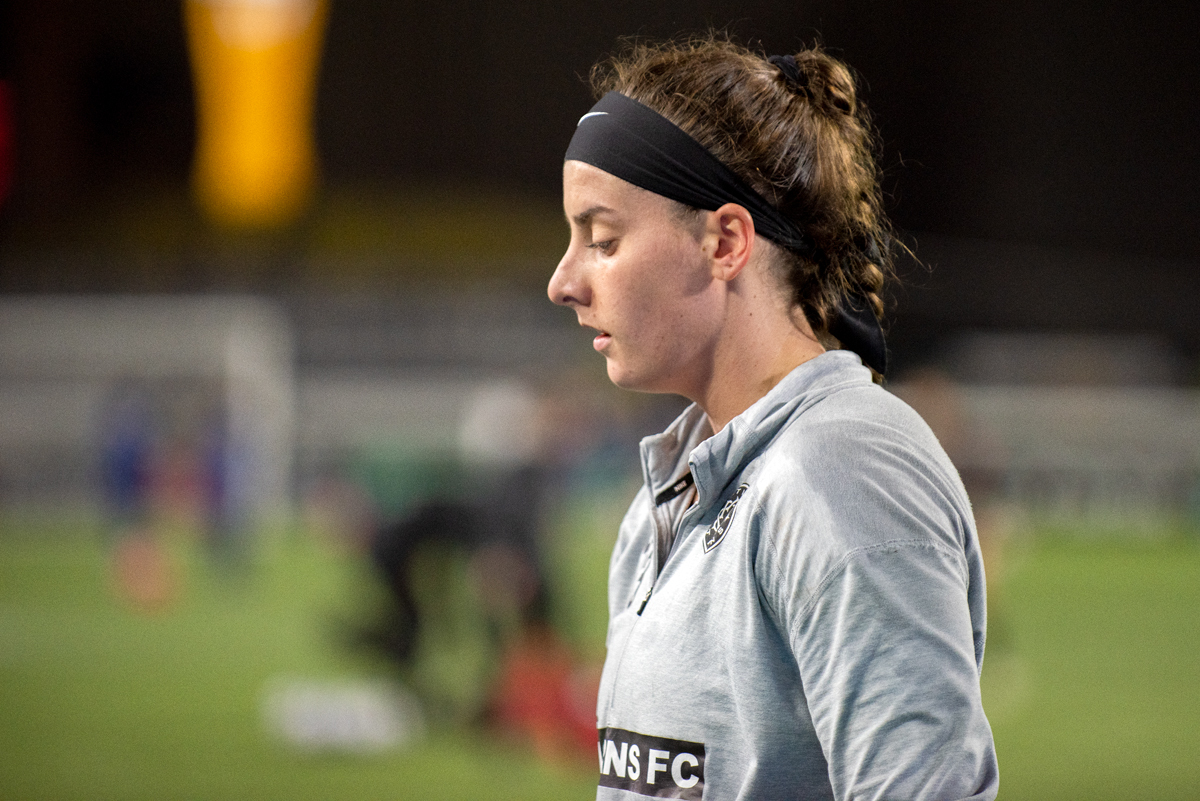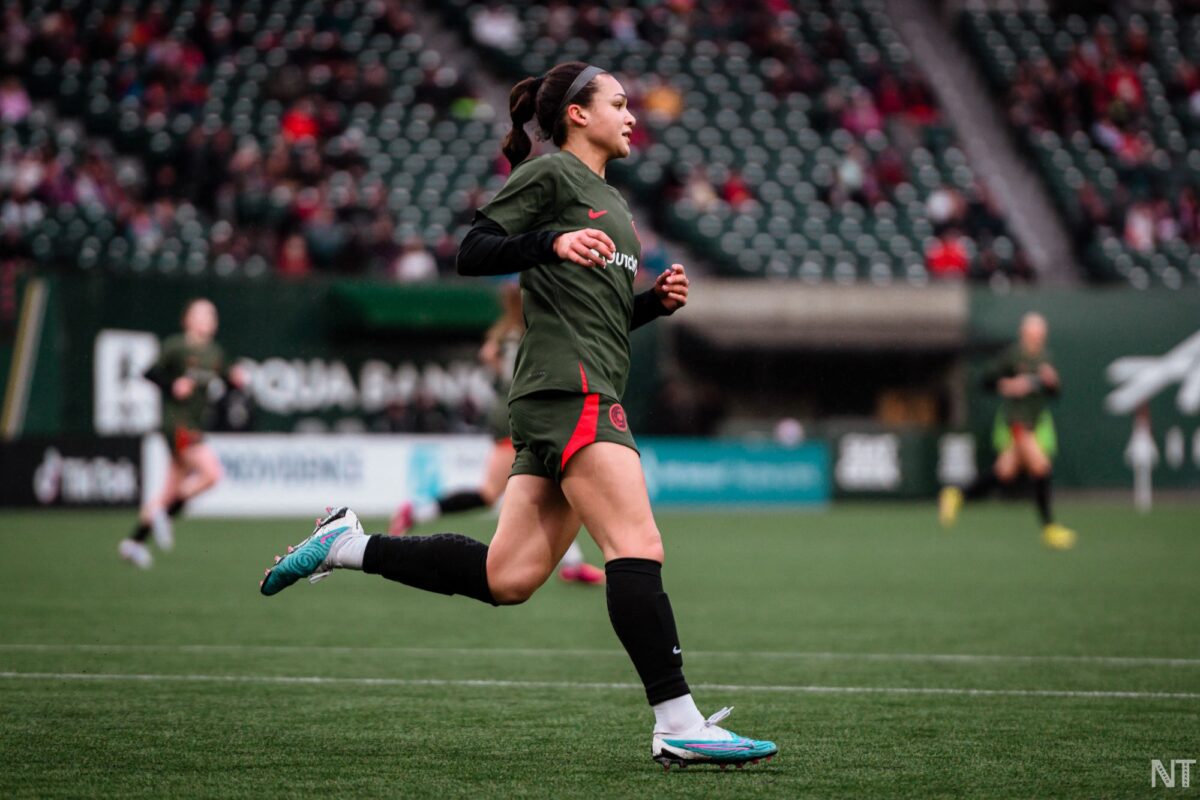You can’t give me back what you’ve taken
But you can give me something that’s almost as good
—The Mountain Goats “Getting Into Knives”
Despite finishing second overall in a very close NWSL season, the Portland Thorns had been on a downward trajectory since the World Cup in August. Following a 4-2 win at home against Washington Spirit in July, the Thorns went 4-7-2 in all competitions. Most notably for the high-scoring Thorns, however, is that in their last five games (semi-final included), Portland only scored two goals while allowing eight. There are a host of reasons for why the team never seemed to regain composure after the World Cup break, but they boil down to two things: a roster that isn’t as deep as its best 11 players and a complete absence of tactics.
After a brutal 1-5 loss to Angel City—which lost the NWSL shield for Portland—the Thorns had to wait three weeks to play their next game. In that time, Hina Sugita went to Uzbekistan, Natalia Kuikka went to Finland, Cristine Sinclair to Canada, and Olivia Moultrie, Sophia Smith, Becky Sauerbrunn, Sam Coffey, and Crystal Dunn went across the United States. That’s the majority of the Thorns’ starting XI across the entire season gone during the preparation for their single most important game, without considering the extra minutes on legs and time zone changes that went along with international duty. For players like Smith, the break was a chance to build back up game minutes, but for players like Moultrie and Coffey, who either did not see the field or played limited minutes, it was more of an extended training away from the Thorns. That wasn’t ideal for a player as crucial as Coffey for a team that had been leaking goals left and right.
The international break also factored into the XI eleven for the semifinal game against New Jersey/New York Gotham FC. The two outfield changes from the Angel City game were Kuikka and Hina, who were replaced by Reyna Reyes and Rocky Rodríguez, respectively. Hina has probably been the Thorns’ most consistent player all season behind Sam Coffey, and being able to bring her off the bench is an asset; perhaps if she had started the game as she had the last time the Thorns faced Gotham, the game could have been wrapped up in 90 minutes. Reyes, on the other hand, played her way into the starting XI—and deservedly so—but perhaps starting Kuikka and Reyes against the fast front line of Gotham would have been more effective.
The biggest change of the night, however, was Shelby Hogan’s selection over Bella Bixby. In probably the boldest move of his tenure, head coach Mike Norris gave Hogan her second regular season start in the team’s biggest game. He said postgame that the change was performance-based, which is a valid assessment of Bixby’s recent form. As much as I love and appreciate Bella Bixby’s personality and vulnerability as a player, I think getting benched in such a crucial moment is what she needs in order to reset herself. None of that takes away the fact that Hogan is an excellent keeper, the lone goal she let in was borderline-unstoppable for any keeper, and she is capable of being a first-choice keeper. Hogan ended the night with two saves, but she was not very busy over the course of the 120 minutes.
Statistically, the game was a stalemate. The Thorns ended with 0.62 xG and 11 total shots to Gotham’s 0.50 xG and 13 total shots. Gotham had 20 fouls (four yellow cards) while the Thorns had 18 (one yellow). Both teams had four corners. On paper, there was little separation between the two sides. The game was won and lost on the sidelines, with coaching, and with the bench.
Over the course of those 120 minutes, Norris only made two impactful subs: Hina and Kuikka at the 60th minute for Rodríguez and Meghan Klingenberg. Smith, whose longest stretch of minutes since she got injured in August was 45 minutes for the USWNT, played the entire game, despite looking visibly fatigued and not as effective as she could have been. Morgan Weaver, who had tape around her left knee, also looked as though she was nursing an injury, as her speed, finesse, and power were absent along the left flank. Dunn has been dealing with an ankle injury for many weeks now, as well.
The Thorns are consistently talked about as having one of the deepest rosters in the NWSL, but a more accurate statement is that their best 11 players are among the best in the league, if not world. The drop off in quality once these eleven are subbed off or injured is quite noticeable. For example, in the 116’ Hannah Betfort, Christine Sinclair, and Michele Vasconcelos came on for Weaver, Moultrie, and Dunn. Sinclair aside, Vasconcelos and Betfort have seen sporadic minutes over the course of the season to varying levels of productivity. While they are decent players—and could really shine at a mid-table team—there is a vast canyon between them and Weaver and Smith, who they typically come on for. By not having any serious game changers available off the bench, Norris had his hands tied when his game plan was not working and he had no good options to try something new.
While it is important that the core of the championship winning team (i.e. the same players that both former head coach Rhian Wilkinson and Norris used in their XIs) came back for the 2023 season, there was no recruitment outside of the college draft to try and bolster the depth of the team and challenge these top players for starting spots. Once Janine Beckie, one of the better additions over the past two years, went down with an ACL tear in preseason and no signing was made to replace her, the writing was on the wall that there was going to be little to no investment into the team this year. Reyes is probably the best addition to the team, as seen by her nod on Sunday. But other than her, the new recruits hardly featured. Izzy D’Aquilla got minutes at the beginning of the season, but her time waned significantly as it became clear she was having a hard time adjusting to NWSL play from college. Adriana Leon, a weird fluke of a loan most likely to help her build minutes for Canada before the World Cup, barely saw the field, and Rikke Seveke has not made a gameday roster since her signing. It’s hard to attract top talent to Portland when an impending sale has been looming over the club for nearly a year, the team is led by an inexperienced head coach, and the squad plays and practices solely on turf. Ultimately, the lack of competition for roster spots among players cost the Thorns the chance to challenge for the title again, because there was no adequate depth when players went down with injury or hit a run of bad form.
It’s anyone’s guess as to when the Instagram post goes up saying that the Thorns wish Norris all the best and “thank him for his contributions as head coach,” but it is inevitable. From his announcement, where everyone was “Excited to get the season started 🙂 #RoseEmoji,” it was clear that the organization was in a holding pattern for the 2023 season. Postgame, Sauerbrunn said that the sale was expected to clear by the end of the year, and until that time, there probably won’t be anymore movement within the squad. However, waiting for the sale to be officially processed and to hire a new head coach leaves very little time to talk to free agents and prospective international players and convince them to join the new and improved Thorns. Until that happens, Portland is not going to be seen as a top soccer destination, which will seriously threaten their chances of building the squad depth that they need to win consistently next season.
I feel as though every week I talk about Norris’ lack of tactics, so I won’t bear repeating myself again. For a first-time head coach, he relied on his star players, and for the most part that worked out well for him. I think with more experience, he could be decent. But the Thorns aren’t the team to learn to be great with; you already need to be great in order to get the job. I can only ask that the next head coach is able to actively switch tactics and game plans when something isn’t working instead of continuing to force a square peg into a round hole.
It’s been a frustrating year to cover the Thorns, not due in any part to the players on the team. It’s been frustrating to see the players in press conferences take responsibility for bad tactics and leadership when in reality they’ve had little guidance. It’s been frustrating to watch the investment, marketing, and adequate training grounds flatline for a team that has set standards in the NWSL since 2013. And, of course, it’s been frustrating to watch Sam Coffey sit on the sidelines of so many USWNT games. I can only hope that this holding pattern that the team has been in since 2021 is over soon, that they can get an owner who puts their money where their mouth is, invests in the team, and attracts top players and coaches from across the world. Women’s soccer is exploding globally, and I fear that this offseason is crucial to make sure that the Thorns don’t fall behind even further.
But, it’s also been a great year to cover the Thorns. Hannah Betfort had a breakout year, Reyna Reyes showed that she’s the future of the Thorns’ defense, Sophia Smith remained in God Mode, and Sam Coffey is such an incredible leader. Whatever happens over the offseason, the players that composed the roster these past two years are special.
“The people in this locker room will never be the same after this year,” Sauerbrunn said postgame, “and we need to appreciate every single moment that we have together.” I think she’s right, and I hope that we have shown that we do appreciate the players, even when their organization repeatedly lets them down.
There’s gonna come a day when you’ll feel better
You’ll rise up free and easy on that day
And float from branch to branch, lighter than the air
Just when that day is coming, who can say? Who can say?
— The Mountain Goats “Up The Wolves”


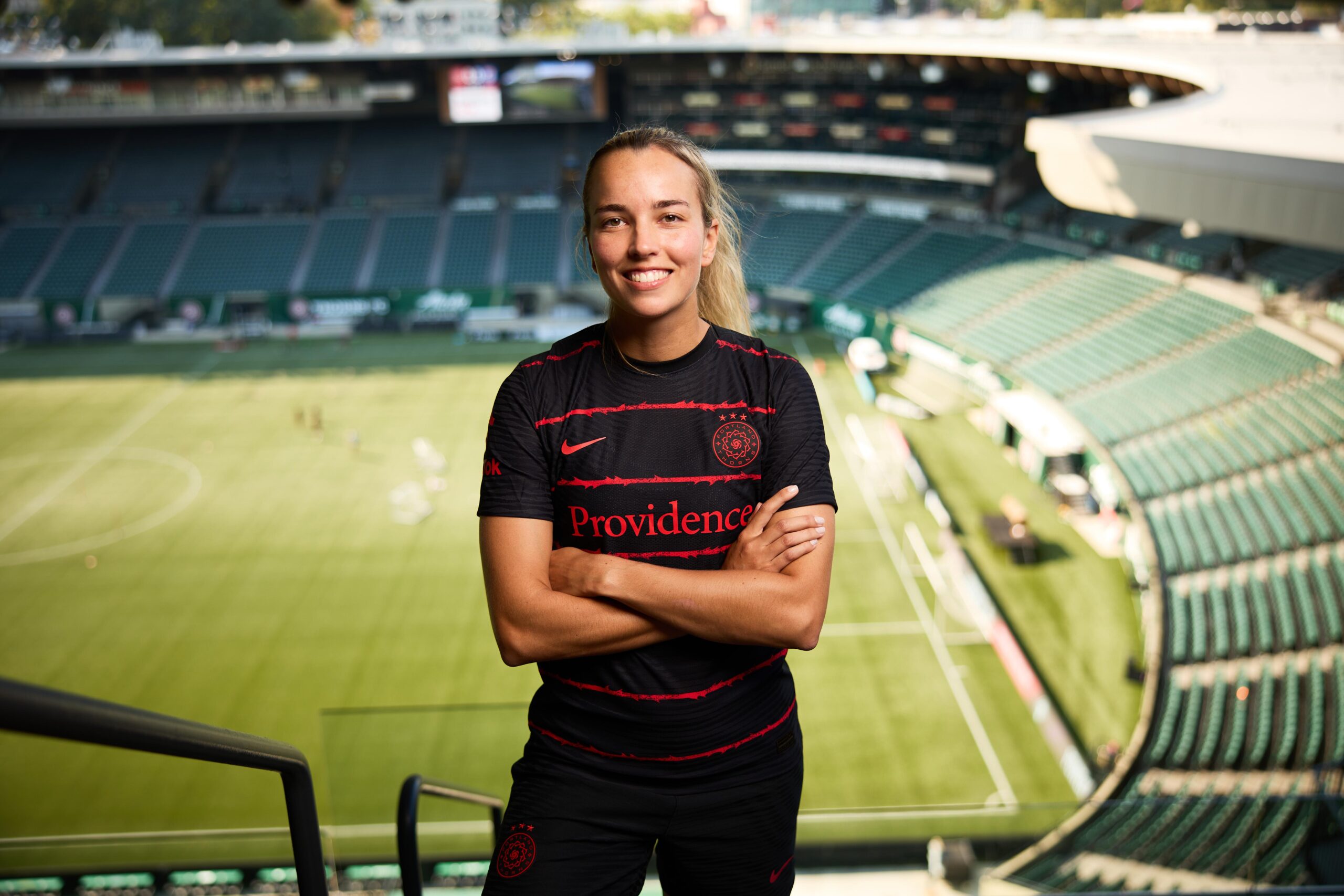
 Unlock with Patreon
Unlock with Patreon